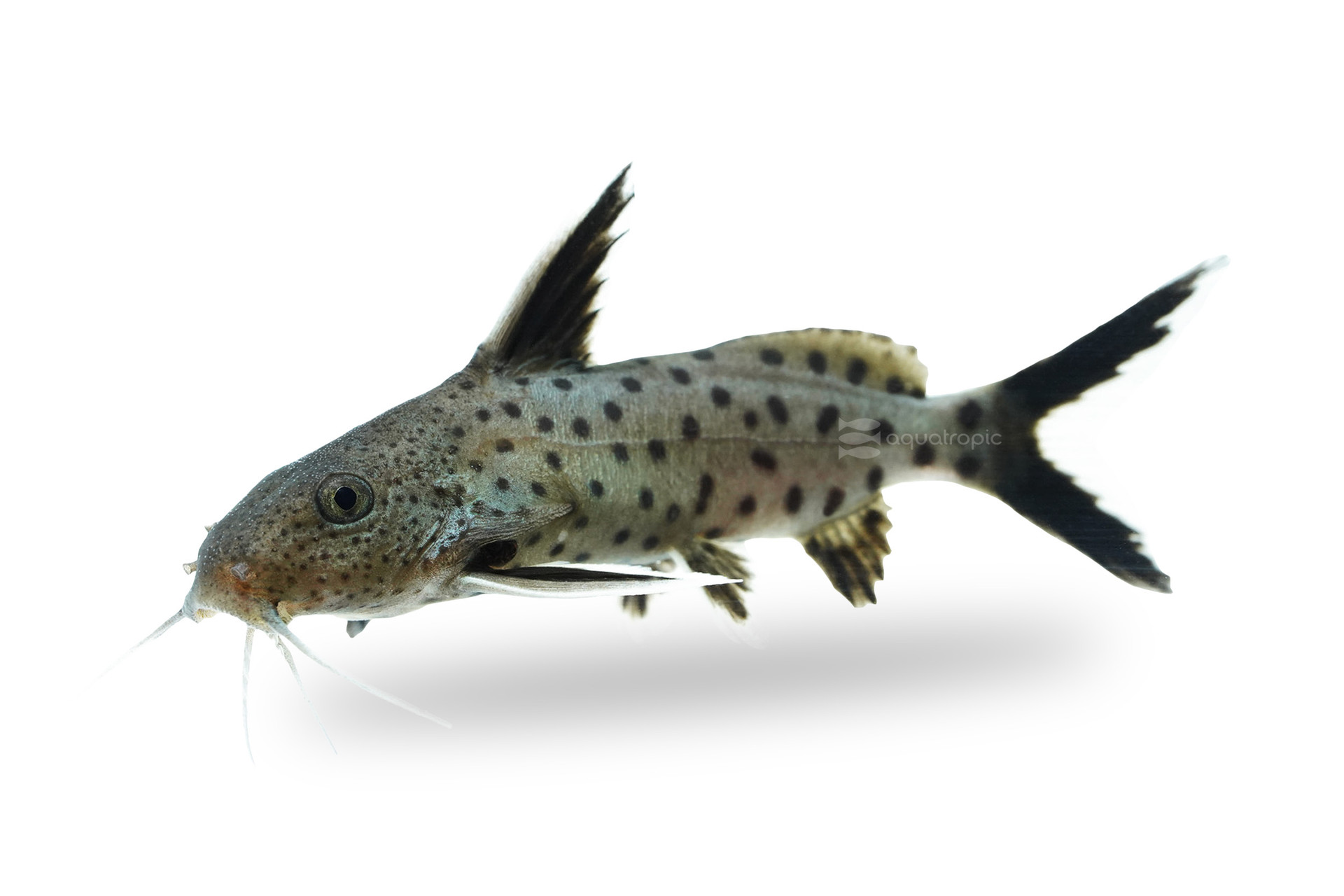The Actual Dwarf Petricola

The Dwarf Petricola Catfish, (Synodontis petricola) is a member of the family Mochokidae, which are also known as “squeakers” or “upside down Catfish”. This is because many members of the family will make audible squeak like sounds when removed from the water, and frequently as juveniles, will swim inverted. These Catfish are a diminutive species only getting about four inches long and are a grayish color with black spots, with black fins and white margins / barbels. Synodontis petricola comes from Lake Tanganyika in South Eastern Africa. There they are found in shallow water, inhabiting holes and crevices within rock piles.
The Dwarf Petricola Cat is a social fish, and so a small group generally should be housed together instead of only one or two fish. A 40 gallon breeder would be the minimum size tank to consider starting a small group in, but these curious fish will appreciate a large space with lots of rocks, caves, and crevices to explore and call home as they would in nature. They coexist well with Tanganyikan Cichlids generally, but they can be parasitic mouthbrooders – more on that later in the breeding section.
Dwarf Petricola Catfish feed on algae and small invertebrates living in it in the wild. Adults consume more algae than do the juveniles and while some of this probably is accidental while hunting, it cant hurt to offer a quality pellet that includes algae to balance out their diet. Aside from that they will relish frozen and live foods appropriately sized for their relatively small mouths.
These Catfish are known to spawn in captivity – but whether they are good or bad parents is a matter of debate, and up to you to decide. In the wild Synodontis petricola is what we call a “parasitic mouthbrooder.” What this means is that like many of the cichlids native to Lake Tanganyika, their young rely on the safety of their parents mouth to avoid being eaten at a young age. The difference here is that Dwarf Petricola Catfish deposit their eggs among the eggs of mouthbrooding cichlids, so that when their eggs hatch the slightly larger Catfish eat their step siblings and the unaware cichlid parents with their strong protective instincts do they work caring for, and protecting the young of the Catfish. Because of this, removing the eggs is recommended, because left on their own, Synodontis petricola will eat their own eggs!
The Dwarf Petricola Catfish is an active fish that given enough hiding spaces, and a small group to hang out with, will be very comfortable in the home aquarium and provide hours of entertainment through their exploring, and social behaviors. They are easy to feed, and can be a moderately difficult spawning project for aquarists looking to get into species with a little more care. Ask your local fish store to get you some sustainably aquacultured Dwarf Petricola Catfish from Aquatropic today!